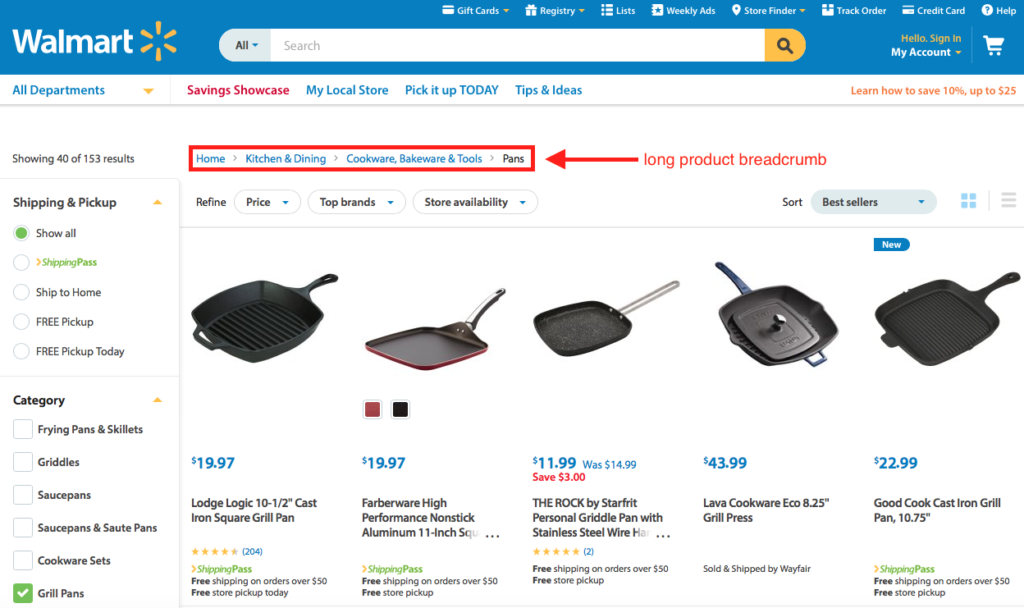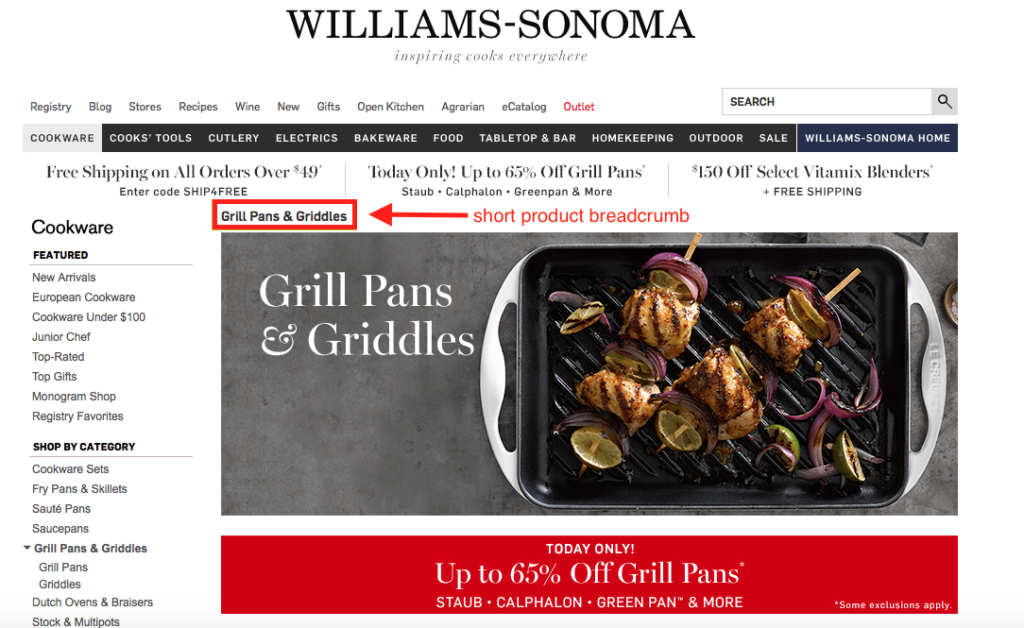With temperatures soaring and summer in full swing, barbecue season has officially begun. But have you ever considered the retail strategies behind that grill pan you purchased, say from Walmart or Williams-Sonoma? A simple comparison of grill pan classification between these two big-name retailers illustrates the key role taxonomy plays in determining business tactics and consumer practices.
What’s a Taxonomy?
A taxonomy is a knowledge organization system. For us, the knowledge is about products sold online and who sells them for how much, over time.
Taxonomy is metadata because it gives structure to data and specifies relationships within it. Like other institutions, businesses turn to taxonomies for several functions:
- Organization and navigation
- Indexing
- Retrieval
The most common taxonomic structure in e-commerce is a hierarchy, in which products are grouped by usage or setting (such as Home or Garden) into increasingly specific subsets. Some of the benefits of this structure are the ability to present the product catalog in stages, making it more manageable, as well as allowing logical relationships between subsets of the data. But in practical terms, let’s consider a timely example of how different retailers’ approaches to taxonomy play out in the online marketplace.
Comparing Taxonomies for a Summer Staple: Grill Pans
As one of the world’s largest retailers, Walmart’s taxonomy features a broad range of categories from Clothing, Shoes & Jewelry to Auto & Tires. Grill pans comprise just a tiny fraction of the goods that Walmart offers, and this is directly reflected in the company’s taxonomy. Finding grill pans on the Walmart website requires navigating through a series of increasingly granular categories, as highlighted below in red.

In contrast, Williams-Sonoma’s taxonomy has much less depth but reflects a consumer base that expects smaller distinctions in kitchenware. Grill pans are built directly into their taxonomy under the macro-category of cookware, providing more direct access to this particular sub-category. So, there’s easier access to a greater level of specification.

The differences in how these two retailers classify grill pans reflect the disparate business goals of each retailer and their respective markets. Not only do their differing taxonomies result in distinct target users and customers, but they also play a role in defining the way those customers interact with the merchants.
For example, a consumer interested in purchasing a grill pan may take advantage of Williams-Sonoma’s granular taxonomy and visit their site to research specific brands or types of grill pans. However, they might end up actually buying the product from Walmart, given that Walmart’s breadth and volume of merchandise cater toward those seeking the best value for their money.
Improving Classification
To improve the ability to accommodate the products of both large, all-in-one retailers and specialty ones, we’ve created a custom taxonomy that bridges the two ends of the coverage spectrum. Continuous development and refinement of this system, based on metrics, helps ensure that our automated classification is industry-leading.
For example, we previously had 10 grilling-related item categories. In order to simplify them and make classification more straightforward, we kept the top four while the remaining ones were merged or deleted due to relatively low product counts. Since these changes were implemented, the performance of our classification algorithms for the items has been as high as 90 percent accurate.
Our historical data, organized by our unique taxonomy, provide a competitive advantage in eCommerce analytics by allowing users to compare products across multiple merchants effectively and efficiently.
Editor’s Note: Contributing writers are Terrie Yang and Eric Chuk. This post was originally published in August 2016 and has since been updated and refreshed for readability and accuracy.















2 Comments